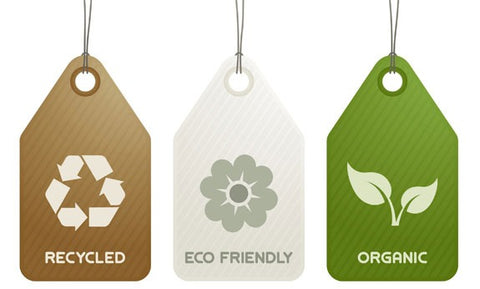
As we make a transition to an eco-friendly landscape, especially in the fashion industry, new concepts have come to the forefront. From sustainable fashion to slow fashion to ethical fashion, these terms have become quite ubiquitous. But what do they mean?
No matter how commonly these terms are used, there can be a stark difference in two people’s definitions of these terms.
For instance, a brand’s approach to being ethical can be singular in comparison to another. Now, neither may be wrong in their approach. Both might be following an eco-friendly method of production, however, the terms used by them might not fit accurately.
Recommended Reading: Fashion & Its Impact on the Environment
According to a study, the term search number of the term ‘sustainable fashion’ has grown by 46% in the past six years. As for ‘ethical fashion’, the term was searched 25% more compared to the last six years. However, only 37% of millennials purchase such certified clothes.
Why do you think? It is the ambiguity surrounding these terms. Definitions exist, there are perplexing.
Given the widespread use of these terms, confusion is just as acceptable. So, how do we deal with this? How do we reduce confusion? To bring more clarity relating to the three new forms of fashion namely, sustainable fashion, slow fashion, and ethical fashion, and how each significantly plays a role in saving the planet, here is all the information you need.
Scroll down to get more information on the same.
What is Slow Fashion?
According to Wikipedia, slow fashion is a way to "identify fashion solutions, based on the repositioning of strategies of design, production, consumption, use, and reuse, which are emerging alongside the global fashion system, and are posing a potential challenge to it.”

Slow fashion model is often viewed as an alternative to fast fashion, a trend that has been criticized much for its impact on the environment. This particular fashion model encompasses everything that is ‘sustainable’, ‘eco-friendly’, ‘ethical’ and ‘green’.
The idea behind slow fashion is to reduce consumerism by giving more preference to the environment. From style to design, quality to the intention behind its make, everything gets considered under slow fashion.
The slow fashion philosophy encompasses the following philosophy.
- Buying vintage clothes
- Redesigning and reusing old clothes
- Shopping from smaller brands
- Buying long-lasting garments
- Making clothes and accessories at home

By opting for slow fashion, you reduce the waste produced, lower your carbon footprint, support fair wage and safe working conditions, save water and reduce exposure to toxic chemicals.
In conclusion, slow fashion is concerned with the clothing piece itself and includes everything related to it.
What is Sustainable Fashion?
Wikipedia defines Sustainable Fashion as “a movement and process of fostering change to fashion products and the fashion system towards greater ecological integrity and social justice.”
Also Read: Understanding Sustainability
Sustainable fashion is not limited to the clothing pieces produced, but it is concerned with the entire process. This ideology is what makes this concept stand out. Sustainable fashion takes into consideration all aspects of designing and manufacturing clothes.

When talking about sustainable fashion from a business point-of-view, fundamental criteria such as conserving natural resources and reducing the environmental impact of the raw materials used are included. The basic idea here is to reduce the carbon footprint and respect the social and economic conditions of workers. Sustainable fashion is about making an eco-friendly process through and through- from acquiring raw materials to the selling point.
Bonus Tip: Why Sustainable Fashion Matters?
Now, the term ‘sustainable fashion’ doesn’t have a single definition. It can mean anything for anyone. Hence, it is often highlighted that sustainable fashion can be categorized into seven different forms. These are:
- On-demand and custom-made
- Green and clean
- High quality and timeless design
- Fair and ethical
- Repair, redesign and upcycle
- Rent, lease, and swap
- Secondhand and vintage

Also Read: 7 Forms of Sustainable Fashion
Sustainable fashion encompasses not only eco-friendly methods but also the fair treatment of laborers, thus, amalgamating with the concept of ethical fashion.
In conclusion, sustainable fashion concerns practicing methods in the textile industry that concerns the environment.
What is Ethical Fashion?
In its broad perspective, ethical fashion covers a range of issues including working conditions in the manufacturing units, exploitation of workers, fair trade, eco-friendly production of products, while being conscious about the environment, and animal welfare.

As defined by Forbes, ethical fashion is “not as bad as mainstream fashion.” The overarching definition of Ethical fashion is all about designing and manufacturing clothes using a process that cares for communities, people and animals while reducing environmental impact.
In the perfect world, when a brand considers human rights, animal welfare, and the environmental impact at every stage of the supply chain, it would be considered practicing ethical fashion.

Brands that fall under the umbrella of ethical fashion, they recognize and respect everyone involved in the entire process. It is ensured that each individual is paid fairly for their skills, have safe working environments, and are appreciated for their talents.
In conclusion, ethical fashion concerns with human, animal and environmental rights that are taken into consideration in the process of making a product.
Ethical vs Sustainable: The basic difference
On the surface, ethical and sustainable fashion might sound interchangeable, but the truth is that they are quite different from each other.
Different brands have different approaches. It is essential to note here that a product that is ethically made might not always be sustainable and a brand that produces sustainable products might not do so ethically.
A fashion brand can be ethical relating to its human rights but not sustainable with its choice of fabrics and environmental practices.
On the contrary, a brand can be sustainable but completely disregard human rights. And if animal rights are taken into the mix, it becomes a whole other issue.
So, their intent might be similar, but the concept behind it is completely different.
Bonus Tip: Can Sustainable Lifestyle Prevent Climate Change?
To Sum Up
Slow fashion, ethical fashion and sustainable fashion are the different sides of the same coin. Each covers the areas that the other doesn’t. If slow fashion talks about using eco-friendly raw materials, ethical fashion highlights the need to uphold human and animal rights. Sustainable fashion as an extension talks about safeguarding the environment.
Also Read: Understanding UN Sustainability Goals
With modern consumers showing great signs of interest, it is time to address all ambiguities surrounding these terms. Only by clarifying the real meaning of these terms, can we expect more and more consumers to invest in the same.

We at NorthMist, not only believe in sustainable fashion but have directed our efforts to endorse ethical and slow fashion as well.
The fashion landscape is changing drastically. To keep up with it, we need to understand and apply these terms together.
Like what you read? Subscribe to our blogs and get weekly updates on the latest sustainable developments in the industry.





